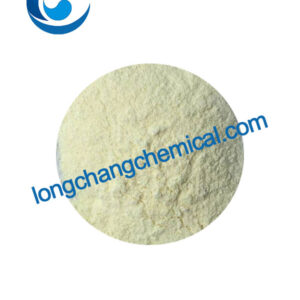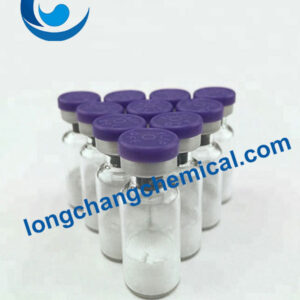Description
4-Methylmorpholine N-oxide / N-methylmorpholine oxide CAS 7529-22-8
Formula |
C5H11NO2 |
Molecular Weight |
117.15 |
CAS NO. |
7529-22-8 |
Assay(G.C.) |
≥50% |
Density |
1.25g/cm3 |
Boiling point |
118-119ºC |
Flash point |
120℃ |
What is Sasolate® NMMO?
Sasolate® NMMO’s other name is 4-Methylmorpholine N-oxide. It is a metabolite of morpholine (M723725).
Sasolate® NMMO Usage
1. 4-Methylmorpholine N-oxide is usually used to dissolve cellulose and dissolve hard protein.
2. 4-Methylmorpholine N-oxide is used as a non-metallic catalyst for the silicidation of ketones.
3. 4-Methylmorpholine N-oxide is used as a co-oxidant for Sharpless asymmetric dihydroxylation in ionic liquids
Sasolate® NMMO Packaging and Shipping
Packing: 250kgs/drum.
Delivery: with in 5-7 working days.
Sasolate® NMMO storage
Stored in a cool dry place out of direct sunlight.
Same series products
N-Methylmorpholine |
109-02-4 |
4-Methylmorpholine N-oxide |
7529-22-8 |
N-Ethylmorpholine |
100-74-3 |
N-FORMYLMORPHOLINE |
4394-85-8 |
Contact Us Now!
We provide customized services, we will usually contact you within 24 hours. You could also email me info@longchangchemical.com during working hours ( 8:30 am to 6:00 pm UTC+8 Mon.~Sat. ) or use the website live chat to get prompt reply.
There are some differences between rigid and flexible polyurethane foam in the selection and use of catalyst:
1, catalyst selection
Rigid foam:
Commonly used catalysts include organotin compounds such as organostannates and organostannic esters. These catalysts help to promote the polymerisation reaction of polyurethane and produce a harder foam structure.
Soft foam:
Commonly used catalysts also include organostannic compounds, but may be more selective and in some cases more types of organostannic compounds may be used. These catalysts help to control the rate of polymerisation reaction of the polyurethane to produce a softer, more flexible foam structure.
2, Reaction rate and hardness control
Hard Foam:
The choice and amount of catalyst leads to an increase in the polymerisation reaction rate, which produces a faster rate of polymerisation, allowing the foam to cure more quickly after formation, resulting in a harder foam structure.
Soft Foam:
Catalyst selection and dosage focus more on controlling the polymerisation reaction rate in order to maintain a certain degree of ductility and elasticity during foam formation, producing a soft, flexible foam structure.
3, Additive formulation
Rigid Foam:
In the preparation of hard foam, in addition to the catalyst, fillers and thickeners may be added to adjust the density and hardness of the foam.
Soft foam:
In order to obtain soft and comfortable foam, more surfactants, softeners, etc. may be added to adjust the softness and elasticity of the foam.
Overall, the selection of catalysts and formulations for rigid and soft foams will differ in the pursuit of different properties, with the aim of regulating the hardness, softness and other characteristics of polyurethane foams to meet the needs of different application scenarios.







Reviews
There are no reviews yet.